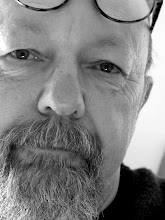




Dee's brother Jim is quite sick these days, and last weekend we went to Lubec, Maine, to visit him and Marilyn and check up on their new place. They've moved into a bed-and-breakfast inn there, and out of their more primitive place in the woods outside of town. It's much more comfortable at the inn, with running water, indoor plumbing, electricity and cable television - everything Jim has (happily) lived without for almost 40 years. But he's sick and needs the comforts of the 20th century.
I wrote about Lubec a month ago, after we returned from our last visit. End-of-the-road town, one bar, one grocery, several struggling churches, a fishing fleet of perhaps 20 boats, a small summer holiday boom, a bridge across the channel to the Canadian island of Campobello. And wind and cold that starts right about now.
There is a cold, hard beauty to the town, where old houses spill down the hillsides of the peninsula almost to the water. The canneries that supported the town are long gone, though the docks and some of the warehouses are still there, rotting quietly as the tide comes and goes.
It was comforting to us that so many people know Jim, or know of him. One woman at the Congregational church Christmas fair (corn chowder, cream cheese and olive sandwich, brownie and coffee for $4.50) said, "Well, we take care of our own in this town." And that appears to be true.
Nearby Lubec is West Quoddy Head State Park, with its red-and-white-striped brick lighthouse, and its long wooded paths along the shore cliffs. Quoddy Head is the easternmost point of land in the United States. One of Jim's great regrets as he has been so weakened is that he can no longer walk the trails there that he walked for decades. We spent part of one sunny afternoon doing just that, so that we could tell him about it when we returned to the inn. It's a beautiful place.
Photos: West Quoddy Head Light, the pews at Lubec Congregational Christian Church, the ocean at Quoddy Head, looking toward Grand Manan island, the forest above the cliffs.
























